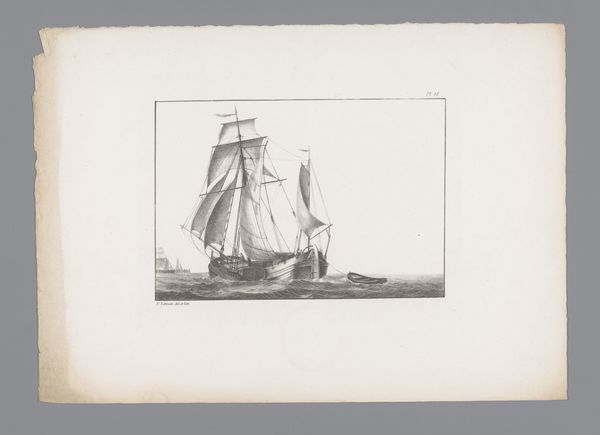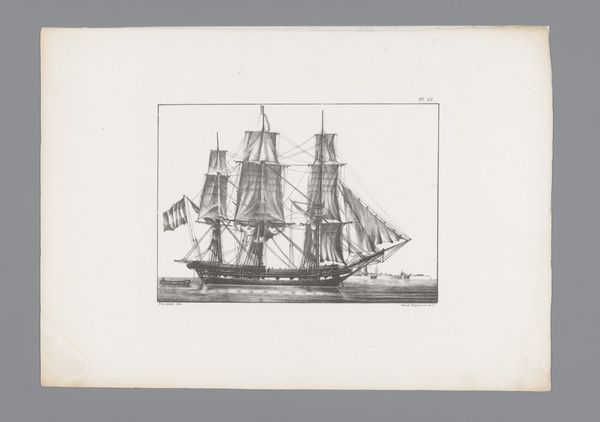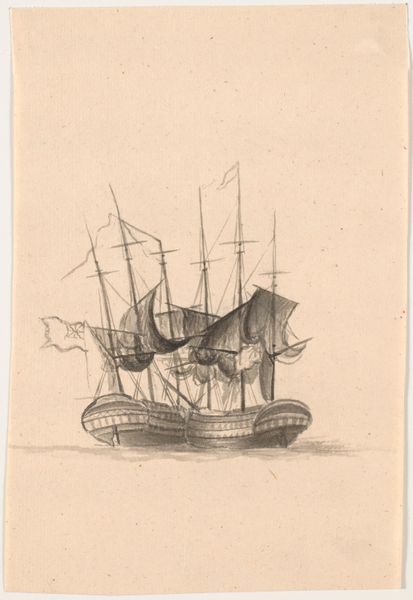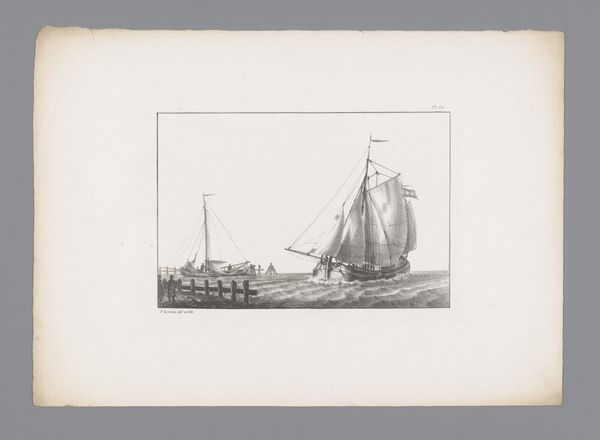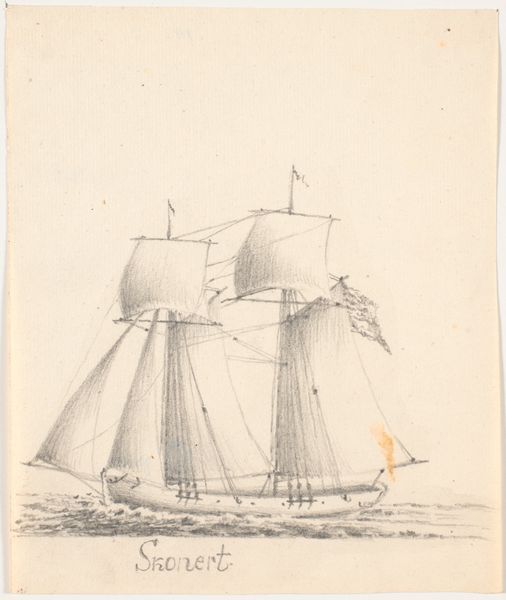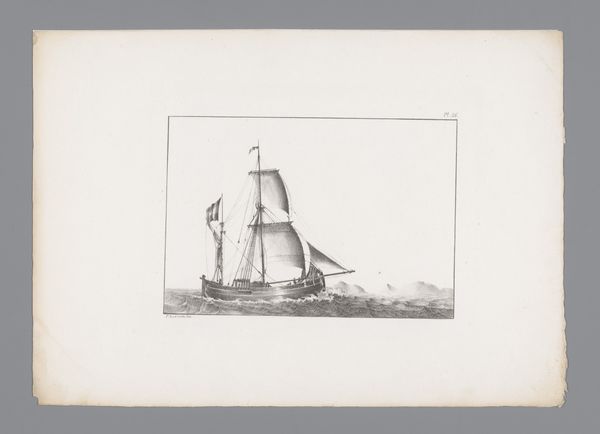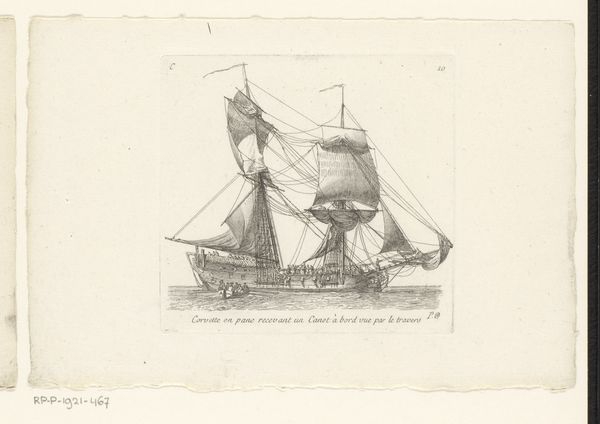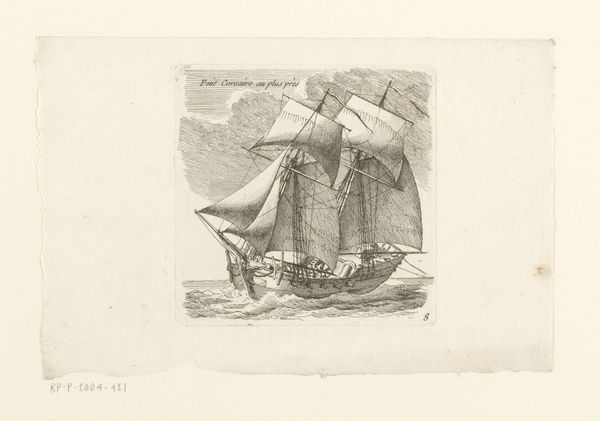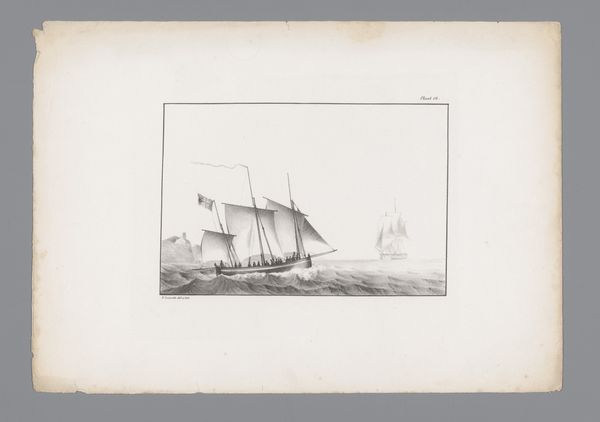
drawing, print, paper, ink
#
drawing
# print
#
landscape
#
paper
#
ink
#
genre-painting
#
realism
Dimensions: height 249 mm, width 360 mm
Copyright: Rijks Museum: Open Domain
Editor: So, here we have "Vier schepen," or "Four Ships," by Johannes Cornelis van Pappelendam, likely created sometime between 1827 and 1884. It’s a print and drawing in ink on paper. What strikes me is the almost clinical way the ships are presented; like a nautical catalog. How do you interpret this work? Curator: What I see are archetypes of maritime power and trade frozen in time. Each ship, rendered with careful detail, evokes a specific era and purpose, representing not just vessels, but entire systems of global exchange. The images carry symbolic weight reflecting national aspirations, technological progress, and the ever-present human desire to conquer the seas. Notice the flags: do they whisper tales of rivalry and colonial ambition? Editor: I didn’t even think about the flags! So, they're not just drawings of ships, but symbols of larger forces? Curator: Exactly! They are vessels laden with cultural meaning, referencing the complex relationship between nationhood, maritime prowess and the expansion of economic influence. Ask yourself what did ships represent to people living in Van Pappelendam’s time? Editor: I guess these ships meant power, movement, maybe even danger, certainly trade. This makes me think of the environmental impact of trade, and what these ships might have transported, both physically and symbolically. Curator: Precisely. Visual symbols of ships in art have transformed in meaning over the centuries; do you think they still hold significance today? Editor: Absolutely. Understanding their historical weight, helps unpack their visual language. It offers a much richer understanding, for sure. Curator: Indeed, our role as interpreters of visual imagery lies in acknowledging the complex intertwining of commerce, technology, and cultural memory within works such as this one.
Comments
No comments
Be the first to comment and join the conversation on the ultimate creative platform.
